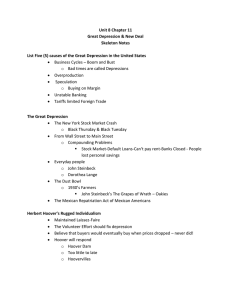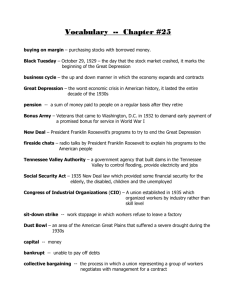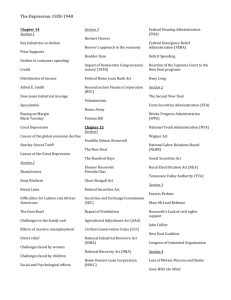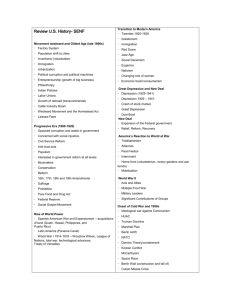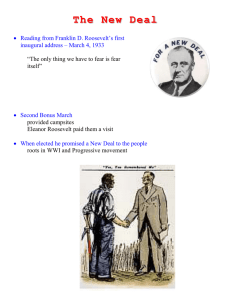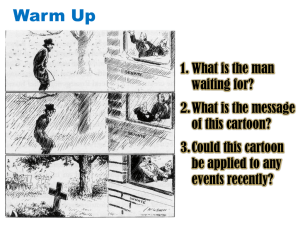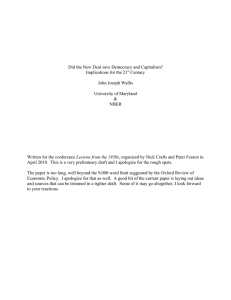Which had the greater effect on the American economy, the First
advertisement
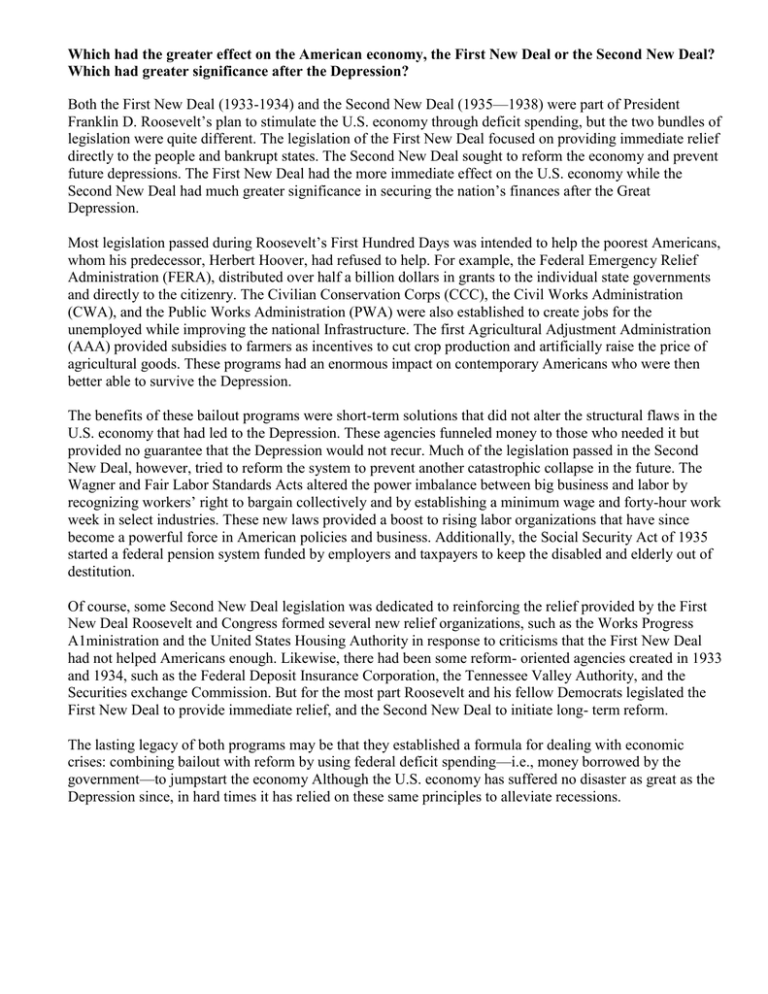
Which had the greater effect on the American economy, the First New Deal or the Second New Deal? Which had greater significance after the Depression? Both the First New Deal (1933-1934) and the Second New Deal (1935—1938) were part of President Franklin D. Roosevelt’s plan to stimulate the U.S. economy through deficit spending, but the two bundles of legislation were quite different. The legislation of the First New Deal focused on providing immediate relief directly to the people and bankrupt states. The Second New Deal sought to reform the economy and prevent future depressions. The First New Deal had the more immediate effect on the U.S. economy while the Second New Deal had much greater significance in securing the nation’s finances after the Great Depression. Most legislation passed during Roosevelt’s First Hundred Days was intended to help the poorest Americans, whom his predecessor, Herbert Hoover, had refused to help. For example, the Federal Emergency Relief Administration (FERA), distributed over half a billion dollars in grants to the individual state governments and directly to the citizenry. The Civilian Conservation Corps (CCC), the Civil Works Administration (CWA), and the Public Works Administration (PWA) were also established to create jobs for the unemployed while improving the national Infrastructure. The first Agricultural Adjustment Administration (AAA) provided subsidies to farmers as incentives to cut crop production and artificially raise the price of agricultural goods. These programs had an enormous impact on contemporary Americans who were then better able to survive the Depression. The benefits of these bailout programs were short-term solutions that did not alter the structural flaws in the U.S. economy that had led to the Depression. These agencies funneled money to those who needed it but provided no guarantee that the Depression would not recur. Much of the legislation passed in the Second New Deal, however, tried to reform the system to prevent another catastrophic collapse in the future. The Wagner and Fair Labor Standards Acts altered the power imbalance between big business and labor by recognizing workers’ right to bargain collectively and by establishing a minimum wage and forty-hour work week in select industries. These new laws provided a boost to rising labor organizations that have since become a powerful force in American policies and business. Additionally, the Social Security Act of 1935 started a federal pension system funded by employers and taxpayers to keep the disabled and elderly out of destitution. Of course, some Second New Deal legislation was dedicated to reinforcing the relief provided by the First New Deal Roosevelt and Congress formed several new relief organizations, such as the Works Progress A1ministration and the United States Housing Authority in response to criticisms that the First New Deal had not helped Americans enough. Likewise, there had been some reform- oriented agencies created in 1933 and 1934, such as the Federal Deposit Insurance Corporation, the Tennessee Valley Authority, and the Securities exchange Commission. But for the most part Roosevelt and his fellow Democrats legislated the First New Deal to provide immediate relief, and the Second New Deal to initiate long- term reform. The lasting legacy of both programs may be that they established a formula for dealing with economic crises: combining bailout with reform by using federal deficit spending—i.e., money borrowed by the government—to jumpstart the economy Although the U.S. economy has suffered no disaster as great as the Depression since, in hard times it has relied on these same principles to alleviate recessions.

